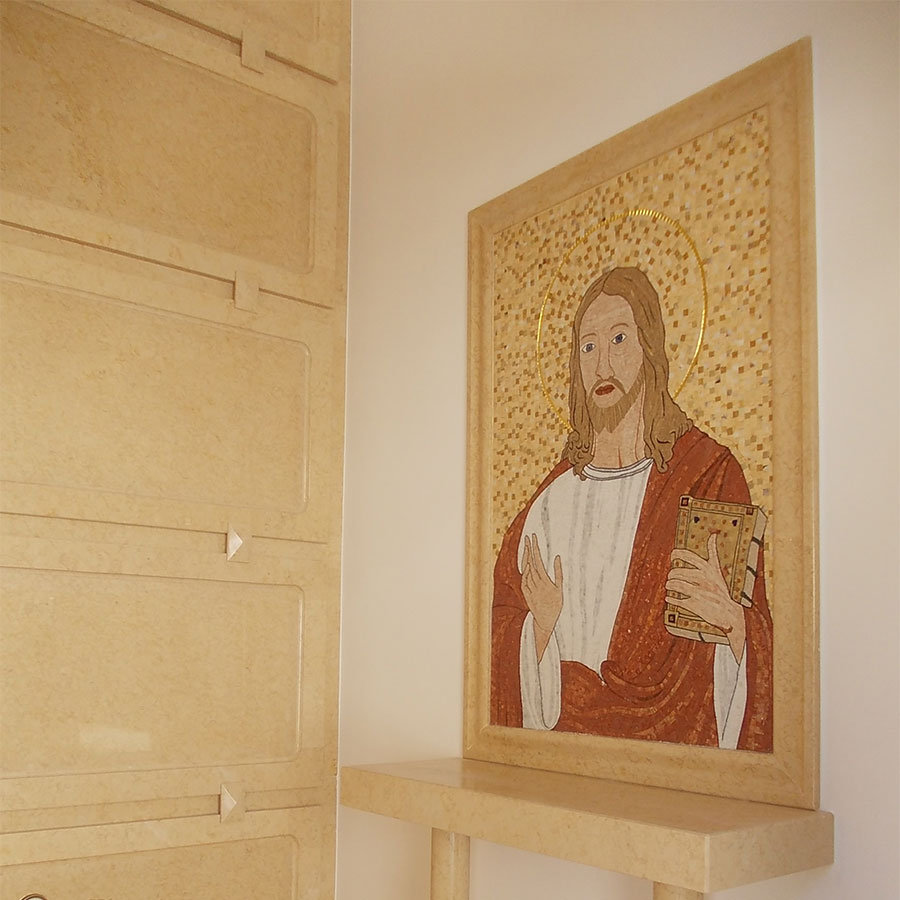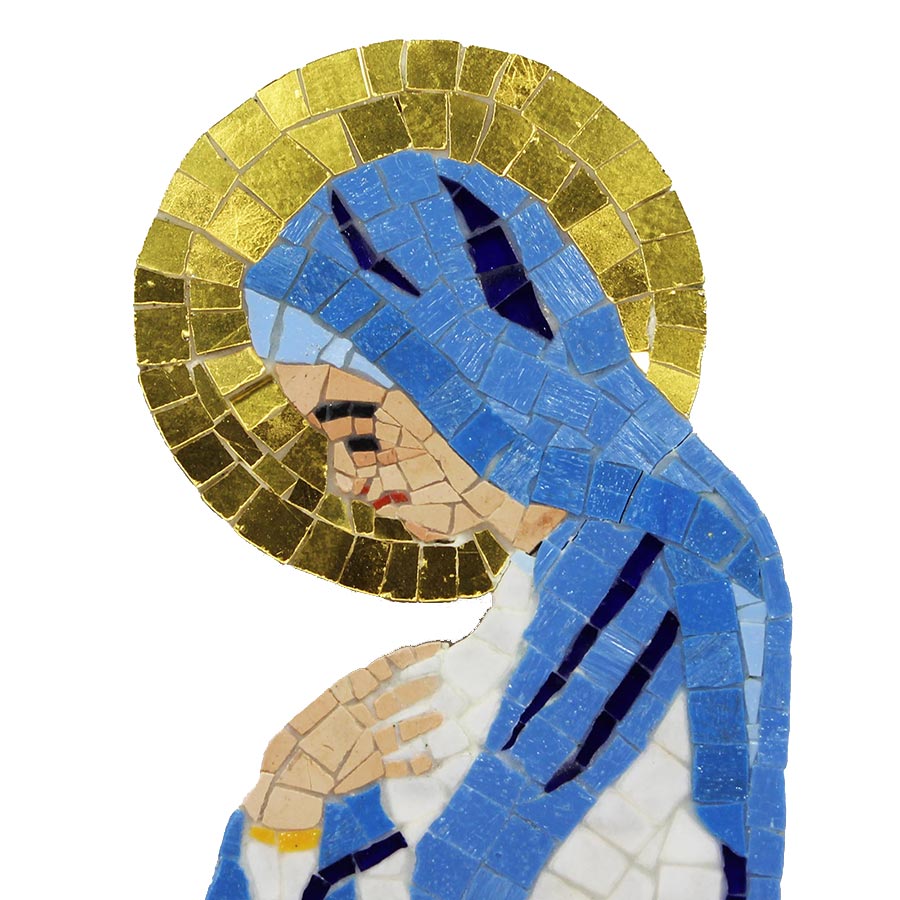The artistic mosaic in the funerary field
In this article we talk about the use of artistic mosaic in the funerary field (cemetery chapels, tombstones, funeral monuments), tracing a brief excursus of the history of artistic mosaics, one of the highest expressions of art, from antiquity to today.
The artistic mosaics adorn and enhance different types of environments (churches and holy sites, villas, hotels, public buildings, palaces).
However, artistic mosaics also finds application in the funeral field, where they can be used to decorate and embellish noble chapels and cemetery monuments. The mosaic can be used to decorate various parts of a funeral chapel or monument: the flooring, an internal wall, an altar, the entrance.

In particular, funerary art mosaics can be recessed on the gravestones giving them a strong touch of originality and uniqueness.
In fact, they are art works with a great suggestive power, and when, in some way, they represent the personality of the deceased person they have the ability to recall memories and arouse intense emotions.
Brief history of the mosaic
"Painting being the drawing and true painting for eternity being the mosaic".
Domenico Ghirlandaio
Mosaic, from the Latin musaicum opus, "work sacred to the Muses", is one of the most ancient arts.
The first mosaics date back to 3000 b.c by the Sumerians. Over time, we find them, increasingly numerous, in different cultures: Roman, Greek, Byzantine, Modern, until spreading all over the world.
Mosaic is a decorative technique used to cover any type of surface, through which a particular design is reproduced on a surface, combining fragments of stone, marble, colored glass pastes or glazed ceramics, with the aid of a plaster.
Modified and perfected over time, this technique reaches its maximum splendor in the Middle Ages when the fragments, commonly called tesserae, copious and sparkling, cover the surfaces of the Christian Churches.
After a period of decline, they return to vogue in modern times in Europe, where, among the mosaic decorated works, Antoni Gaudì's creations are a significant testimony.
Among the different types of artistic mosaics we find:
- monochrome floor mosaics
- mosaics with white and black tiles
- mosaics with elaborate polychrome floral motifs
- mosaics with virtuosic pictorial scenes
The mosaics proposed by Real Votiva
Our rigorously handmade mosaics, according to the rules of millennial mosaic art, are real art works of funeral art.
Recessed artistic mosaic for tombstone (Madonna)
In addition to the catalog proposals, our master mosaic artists can create, on request, personalized mosaics based on an image supplied by the customer, choosing the most suitable tiles for the style of the tombstone and the most suitable decorations to remember the personality or passions of the deceased.
For more information on our mosaics, visit www.realvotivastore.com/en/funeral-art-mosaics.
To request a quote, contact our customer service.































































 4,8
4,8